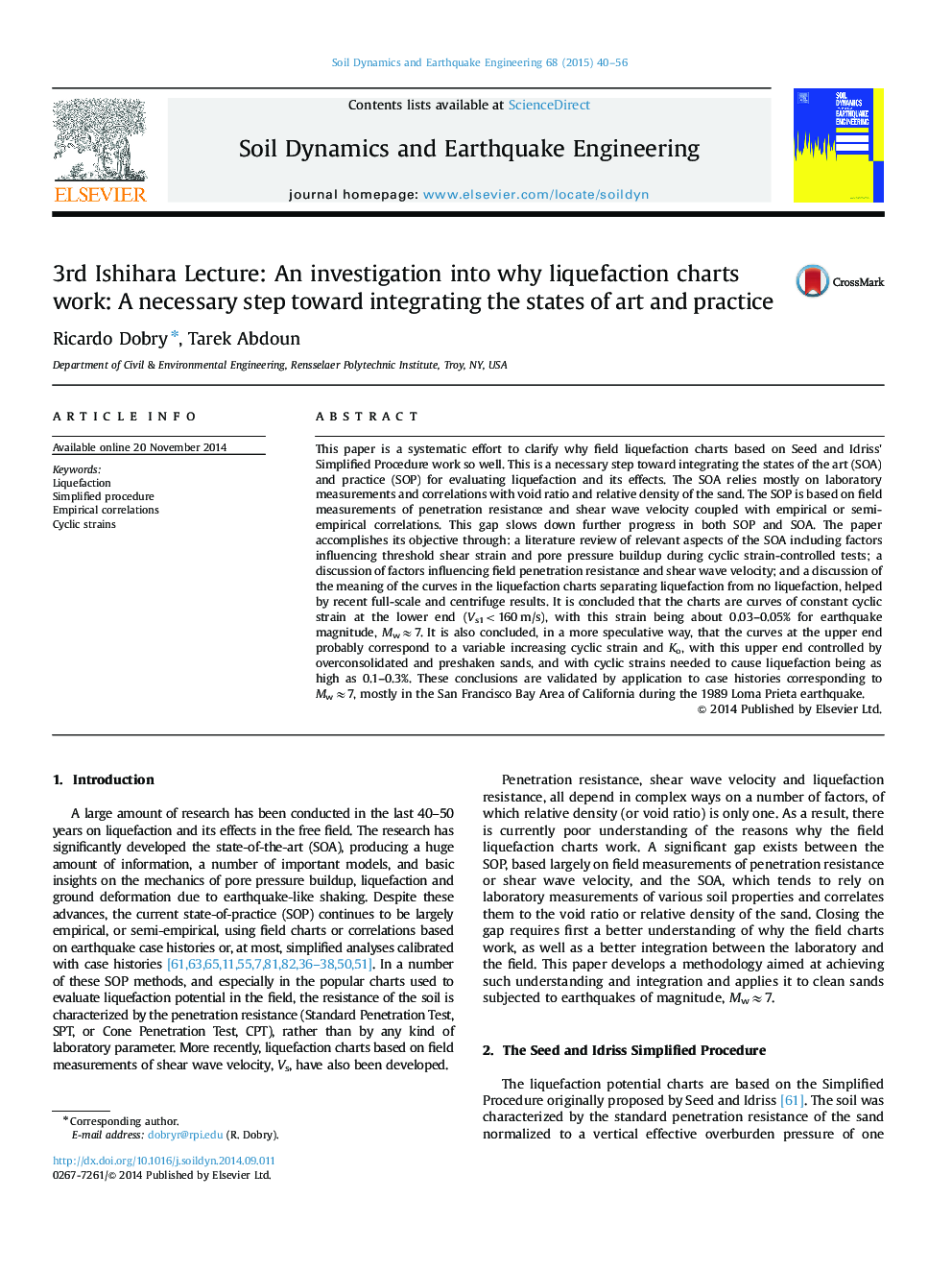| کد مقاله | کد نشریه | سال انتشار | مقاله انگلیسی | نسخه تمام متن |
|---|---|---|---|---|
| 304087 | 512775 | 2015 | 17 صفحه PDF | دانلود رایگان |
This paper is a systematic effort to clarify why field liquefaction charts based on Seed and Idriss׳ Simplified Procedure work so well. This is a necessary step toward integrating the states of the art (SOA) and practice (SOP) for evaluating liquefaction and its effects. The SOA relies mostly on laboratory measurements and correlations with void ratio and relative density of the sand. The SOP is based on field measurements of penetration resistance and shear wave velocity coupled with empirical or semi-empirical correlations. This gap slows down further progress in both SOP and SOA. The paper accomplishes its objective through: a literature review of relevant aspects of the SOA including factors influencing threshold shear strain and pore pressure buildup during cyclic strain-controlled tests; a discussion of factors influencing field penetration resistance and shear wave velocity; and a discussion of the meaning of the curves in the liquefaction charts separating liquefaction from no liquefaction, helped by recent full-scale and centrifuge results. It is concluded that the charts are curves of constant cyclic strain at the lower end (Vs1<160 m/s), with this strain being about 0.03–0.05% for earthquake magnitude, Mw≈7. It is also concluded, in a more speculative way, that the curves at the upper end probably correspond to a variable increasing cyclic strain and Ko, with this upper end controlled by overconsolidated and preshaken sands, and with cyclic strains needed to cause liquefaction being as high as 0.1–0.3%. These conclusions are validated by application to case histories corresponding to Mw≈7, mostly in the San Francisco Bay Area of California during the 1989 Loma Prieta earthquake.
Journal: Soil Dynamics and Earthquake Engineering - Volume 68, January 2015, Pages 40–56
